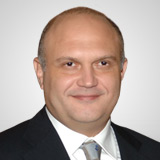Healthcare is an undervalued and inflation-resistant sector with a significant cash flow moat — the demand for health care and associated products and services is immune from inflationary pressures and economic conditions, suggests Rida Morwa, editor of High Dividend Opportunities.
Diversification is critical when it comes to investing in healthcare. How can we do that? We can gain instant diversified exposure within healthcare with closed-end funds (CEFs).
With CEFs, you have qualified experts working to assess and evaluate opportunities in this lucrative sector while collecting regular income. Importantly, you get instant diversity and broad exposure to a great sector, without significant exposure to the underperformance of one company.
Tekla Capital Management is an asset manager that specializes in healthcare investing. Their team consists of personnel who are qualified medical doctors and scientists with a strong background in fundamental research and portfolio management. In fact, Tekla prides itself on being healthcare investment managers, not investment managers that manage healthcare.
Tekla Healthcare Investors (HQH) was established in 1987 and is Tekla's oldest closed-end fund. HQH is well diversified into 148 securities, with a heavier emphasis on biotechnology (58%), followed by pharmaceuticals (16%) and Life Sciences (8%).
HQH has a significant focus on U.S.-based commercial staged companies (companies that generate revenues and earnings). HQH pays a variable quarterly distribution of 2% of the fund's net assets. The CEF sometimes employs Return of Capital ('ROC') to pay the distributions.
For a fund like HQH that has done an excellent job preserving NAV over the years, this variable distribution policy and the ROC component do not necessarily pose a risk to your income, particularly when the CEF is purchased at discounted valuations.
HQH's $2.01/share annual dividend (trailing 12 months) calculates to a 9.3% yield. Today, this CEF presents an attractive investment opportunity through its 4% discount on NAV.
As an increasing number of hedge funds are building in-house expertise to better invest in healthcare, we expect this sector to have an improved valuation multiple. As that happens, HQH's valuation is also set to improve, and investors will be rewarded with higher distributions.
Tekla World Healthcare Fund (THW) is HQH's younger sister with salient differences in strategy. This CEF was established in 2015 and has greater exposure to pharmaceuticals, healthcare equipment & supplies, and healthcare providers & services companies.
THW has greater exposure to non-U.S. companies and, unlike HQH, has about 14% exposure to convertible bonds and preferred equity of healthcare companies. THW is well diversified across 158 holdings and employs modest leverage of 17%, and we can see health insurance, medical devices, healthcare services, and non-U.S. names in its portfolio.
THW has a policy to distribute $0.1167 per share per month, a payment amount it has maintained since its inception. This calculates to an 8.5% annualized yield. A large portion of the distribution comes from ROC, providing you a deferred tax treatment, and bringing advantages to long-term shareholders.
Over the past five years, THW's NAV has increased 3.5% as it paid $7 in distributions to shareholders, indicating management is doing an excellent job in preserving the health of the CEF.
THW is an excellent monthly pay CEF from Tekla for income investors, with a healthy balance of domestic and international markets. This CEF is set to be rewarding in the years to come.
With HQH and THW in your portfolio, you don't have to try to keep up with all the moving pieces of this complicated field. You can sit back and collect your passive income stream, and benefit from the major tailwinds of innovation and growing demand for healthcare from an aging population.



















